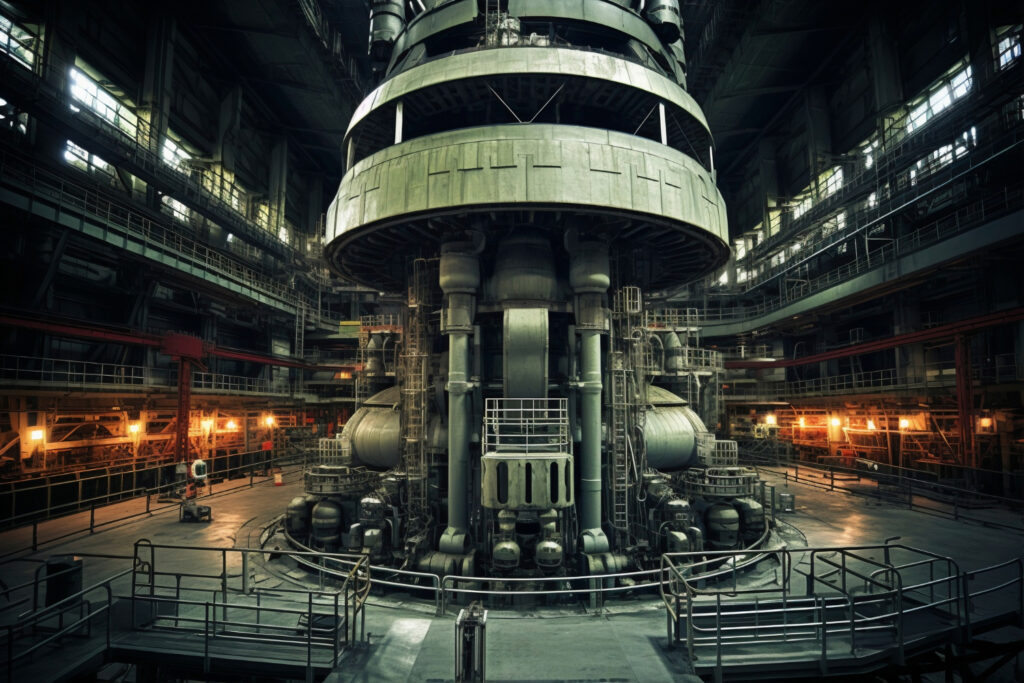As we look into the future of energy, a big question pops up. Can Small Modular Reactors (SMRs) help ASEAN regions achieve energy independence? Or will they fail like other nuclear projects? SMRs promise better efficiency and safety for our energy needs.
But, the truth in ASEAN markets is different. There are big economic and regulatory problems. These issues make many doubt if SMRs can work.
Looking at SMRs, we see a big problem. No reactor has been built, and none are being built now. The demand for new nuclear solutions is high. But, there are many failed projects and rising costs, like the Vogtle project in the U.S. Its budget went from $14 billion to $34 billion.
So, why do SMRs struggle in ASEAN? We will dive into the reasons in the next sections. We’ll look at investment problems, lack of data, and proven success. We’ll see why SMRs face big challenges in ASEAN markets.
Key Takeaways
- No Small Modular Reactors have been built or are under construction in ASEAN regions.
- The costs associated with large nuclear projects have shown significant overruns, impacting investor confidence.
- The historical abandonment of nuclear projects reflects broader challenges and resistance faced by SMRs.
- Regulatory complexities and public perception play critical roles in the feasibility of nuclear energy solutions.
- SMRs lack complete operational data, which hurts their reputation as a reliable option.

Introduction to Small Modular Reactors and Their Promise
The energy sources in ASEAN are changing for the better. We need more energy, and nuclear power is a good option. Small Modular Reactors (SMRs) are a new way to make nuclear power. They solve problems of old nuclear plants.
Overview of Nuclear Energy in ASEAN
Nuclear energy is important for Southeast Asia’s energy mix. Countries want to use less fossil fuel. They are looking at nuclear power as a cleaner choice.
The Concept of Small Modular Reactors
SMRs are small nuclear reactors, up to 300 MWe. They are made in factories and then moved to sites. This makes building them faster and cheaper.
These reactors are reliable and don’t pollute much. Some will start working in 2019. Before 2030, we will see more advanced SMRs.
Advantages of SMRs Over Traditional Large Nuclear Plants
SMRs have many good points. Here are a few:
- Enhanced Safety: They have special safety systems. These systems work without people for a long time.
- Smaller Footprint: They are small. This means they can go in places big plants can’t.
- Cost Efficiency: They are made in factories. This makes them cheaper and less risky.
- Flexibility: They can be used in places far from cities. This helps meet energy needs in remote areas.
More people are interested in SMRs. They are part of a big change to clean energy. For more info on SMRs, check out this report.
Economic Challenges Facing SMRs in ASEAN
Small Modular Reactors (SMRs) in ASEAN face big economic hurdles. These challenges might slow down their success. It’s key to understand these issues to help nuclear energy grow in our world.
High Initial Investment and Capital Costs
The initial investment for SMRs is a big problem. The cost is often more than big plants, making it hard for investors. Even though SMRs could be cheaper to make, real-world issues make it hard to get money for them.
Competitive Energy Markets and Alternatives
In ASEAN, competitive energy markets add to the complexity. With more affordable renewables, people and governments are looking elsewhere. We need to show that SMRs are good options, not just rivals. This means changing how we support different energy types.
Cost Overruns and Project Delays: A Historical Perspective
Looking back, nuclear projects often go over budget and take too long. This makes people worry about SMRs. We must learn from these mistakes to manage money well and finish projects on time.
| Challenge | Description | Impact on SMRs |
|---|---|---|
| High Initial Investment | Upfront capital costs higher than traditional reactors | Deters investment and project initiation |
| Competitive Energy Markets | Influence of cheaper renewable energy sources | Complicates market entry and strategy formulation |
| Cost Overruns | Historical precedent of budgetary excess | Creates skepticism and wariness from investors |
Regulatory and Policy Hurdles for SMRs
Exploring Small Modular Reactors (SMRs) in ASEAN markets shows a complex landscape. Regulatory hurdles are big challenges that slow progress. Licensing processes in ASEAN countries are complex and vary greatly.
Complex Licensing Processes in ASEAN Countries
Licensing for nuclear energy differs in ASEAN nations. Each country has its own rules, causing delays and confusion. This makes it hard to adopt SMRs.
By 2022, no SMRs were used worldwide. The complex licensing adds to the challenges.
Lack of Clear Policy Framework for Nuclear Energy
Many ASEAN countries lack clear nuclear energy policies. This creates uncertainty and hinders planning. Without clear policies, investors may not invest, slowing SMR growth.
Nations planning to use SMRs must fix these issues. This will make the business environment better and attract investment.
Public Perception and Resistance to Nuclear Power
Public fear is a big obstacle for nuclear energy. Accidents and risks have made people wary. This is true in ASEAN, where nuclear education is lacking.
To overcome this, we need to talk about SMR safety and benefits. This will help people understand and support nuclear energy.
To solve these problems, we need a detailed plan. We must make licensing easier, create clear policies, and address public fears. This will help SMRs succeed in ASEAN.
Remember, a well-informed public and strong rules are essential. They unlock nuclear energy’s full power in the region.
Learn more about these challenges here.

Why Small Modular Reactors Fail in ASEAN Markets?
Small Modular Reactors (SMRs) are seen as a good option for power. But, they face big challenges in ASEAN markets. A big problem is the lack of data and success stories.
We don’t have enough proof from OECD countries. This makes it hard to convince people to invest. We learn about SMR failure reasons by looking at how they do worldwide.
Absence of Operational Data and Proven Track Records
There’s no operational data for SMRs. This makes it hard for investors and others to trust them. No SMRs are running in OECD countries, and many projects are delayed or too expensive.
Looking at global SMR experience, we see many challenges. Countries face tough rules and long waits. This makes it hard to get people to invest.
The Experience of Other Nations in SMR Deployment
SMRs have had both wins and losses around the world. For example, the Korean SMART reactor got approval in 2012 after a long wait. But, not many countries use them.
China and Russia’s experiences teach us about the risks. We need solid operational data to prove SMRs are safe and work well. Projects like NuScale’s try to use what we already know. But, many doubt their success.
Cultural and Political Factors Impacting Adoption
Culture and politics in ASEAN countries affect SMR adoption. Fear of nuclear power, because of past accidents and local worries, is a big problem. These cultural political factors make it hard to introduce new tech.
We need to find a way to overcome these issues. We must talk to people, understand their concerns, and build trust in nuclear energy.
Conclusion
In conclusion on SMRs, Small Modular Reactors are an interesting option for energy in ASEAN. But, they face many challenges. Their safety and lower environmental impact are great, but they’re held back by money, rules, and public opinion.
The cost to start is high, and projects like Hinkley Point C in the UK show this. ASEAN countries need to think hard about these costs.
The future of nuclear energy in ASEAN also depends on how people feel about it. Not having clear rules makes things harder. Lessons from other places show us how important it is to win over the public and make good policies.
To make SMRs work in ASEAN, we must talk to everyone involved. We need to make rules clearer and get people on board. If we don’t, SMRs might not be part of our energy future. This could mean missing out on their benefits for sustainable energy.

This Article is Reviewed and Fact Checked by Ann Sarah Mathews
Ann Sarah Mathews is a Key Account Manager and Training Consultant at Rcademy, with a strong background in financial operations, academic administration, and client management. She writes on topics such as finance fundamentals, education workflows, and process optimization, drawing from her experience at organizations like RBS, Edmatters, and Rcademy.



